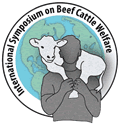BCS Indicates Welfare Status
Body condition assessments can be used as an indicator of an animal’s welfare, as well as its nutritional status.
Most cow folk are familiar with the body condition scoring system of gauging the relative fatness of beef cows. Commonly used in the United States is a 9-point scale ranging from body condition score (BCS) 1, denoting severe emaciation, to BCS 9, representative of a very obese animal. The BCS system is widely recommended as a tool for assessing the nutritional status of a cow herd. However, Kansas State University (K-State) veterinarian Bob Larson believes it may also serve as a metric for beef cattle welfare.

“In a herd where most cows are BCS 5 and 6, I would expect to see a few 7s and a few 4s. But, if you find a 3 within a herd averaging 5 to 6, there’s probably something wrong with her,” said Bob Larson, advising producers to look at the extremes, on either end, and assess those animals individually.
A professor of clinical sciences at K-State’s college of veterinary medicine, Larson spoke during the fifth International Symposium on Beef Cattle Welfare, which was hosted June 8-10, 2016, in Manhattan, Kan. He reminded the audience that a dam’s BCS is a relatively good tool for assessing the welfare of her calf. Cow body condition, particularly during the last trimester of gestation, influences calf birth weight, percentage of live calves at birth and weaning, and calf weaning weight. Cow body condition also influences the time needed to return to estrus and rebreed.
Larson advised listeners to think about what BCS suggests with regard to a cow’s welfare. Very low BCS is cause for concern about either disease or inadequate nutrition, and very high BCS should raise questions about potential calving difficulty, metabolic disease or musculoskeletal disease.
As an example, Larson cited studies showing cows least likely to be pregnant, and cows most likely to abort, included those whose BCS was less than 5 (moderate fat cover) at the time of pregnancy testing. Larson would not expect to see many cows like that among spring-calving herds that are preg-checked in the fall.
“I think it tells me something about the health status of that kind of cow — now and probably in the past. She’s probably sick, or has been, or she has bad teeth,” said Larson, noting how BCS is thus an indicator of a problem related to the health and welfare of such individuals.
Larson noted, however, that there will be variation within any population, even though all animals receive the same diet. A range of BCS within a given herd is to be expected and is compatible with good welfare.
 “In a herd where most cows are BCS 5 and 6, I would expect to see a few 7s and a few 4s. But, if you find a 3 within a herd averaging 5 to 6, there’s probably something wrong with her,” said Larson, advising producers to look at the extremes, on either end, and assess those animals individually.
“In a herd where most cows are BCS 5 and 6, I would expect to see a few 7s and a few 4s. But, if you find a 3 within a herd averaging 5 to 6, there’s probably something wrong with her,” said Larson, advising producers to look at the extremes, on either end, and assess those animals individually.
Larson advised the audience to remember that poor BCS is indicative of poor welfare, but not necessarily poor nutrition. It might be something else and warrants investigation.
Watch for additional coverage of the 2016 ISBCW on www.angus.media and in the Angus Journal and Angus Beef Bulletin. Comprehensive meeting coverage will be archived at www.api-virtuallibrary.com/meetings_other_news.html.







